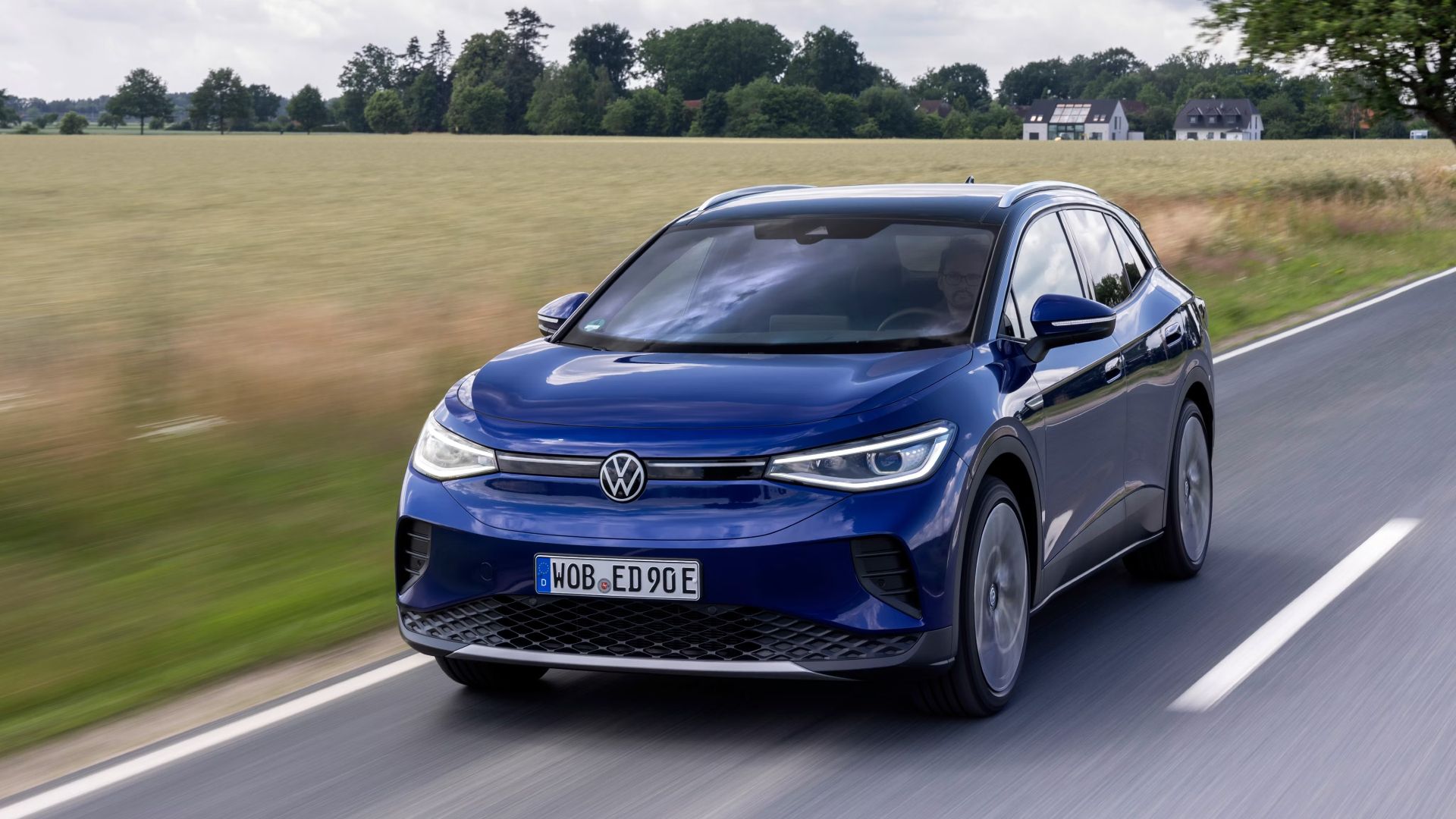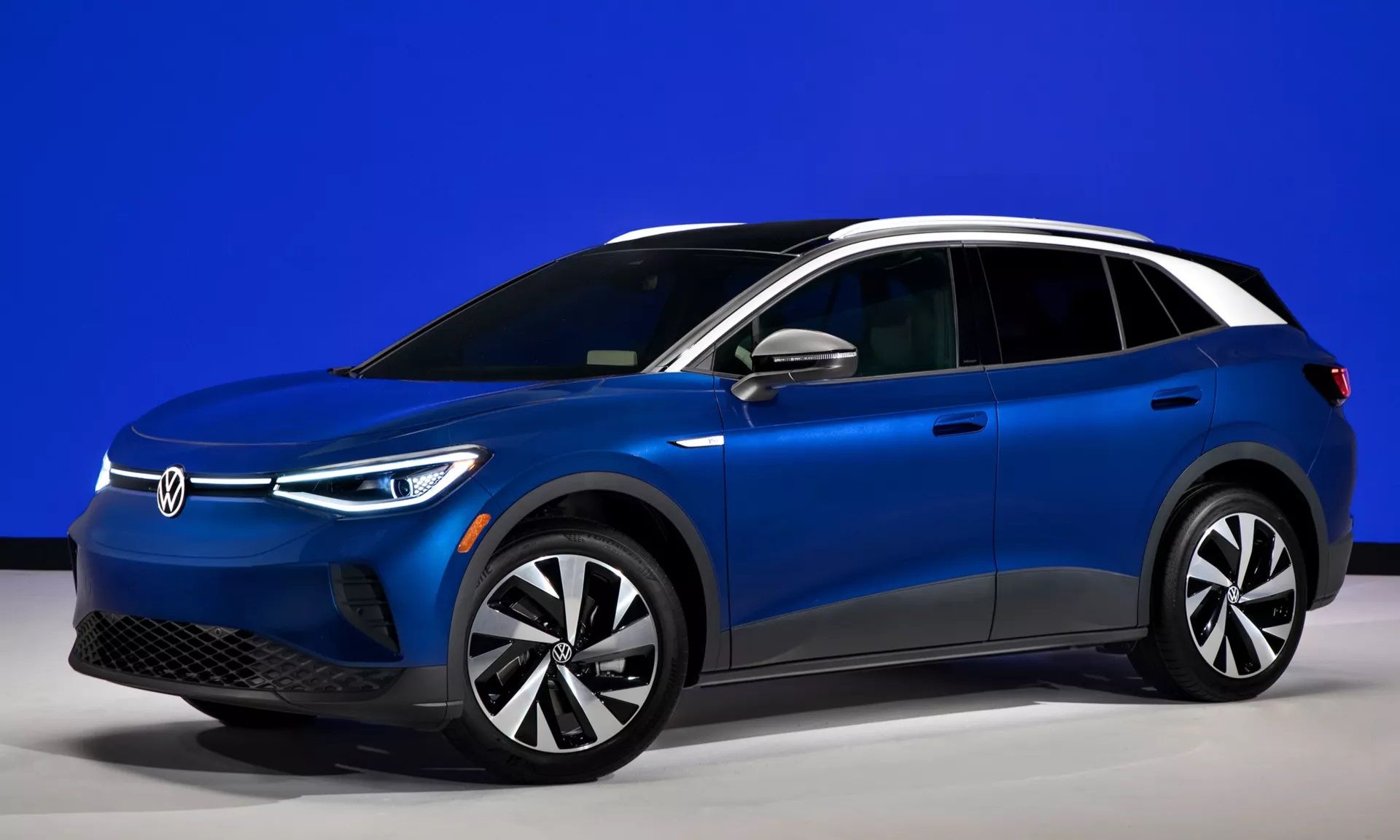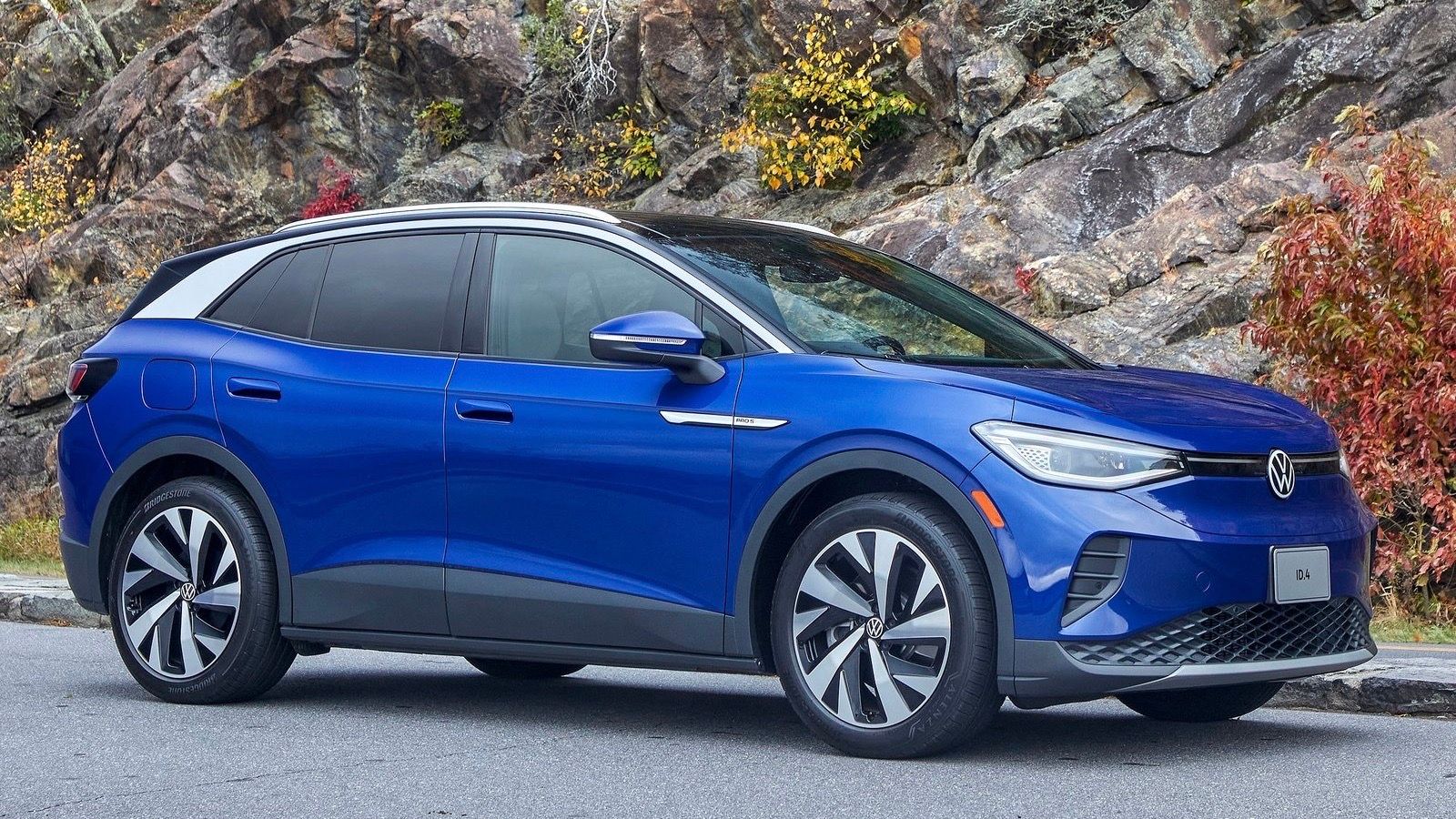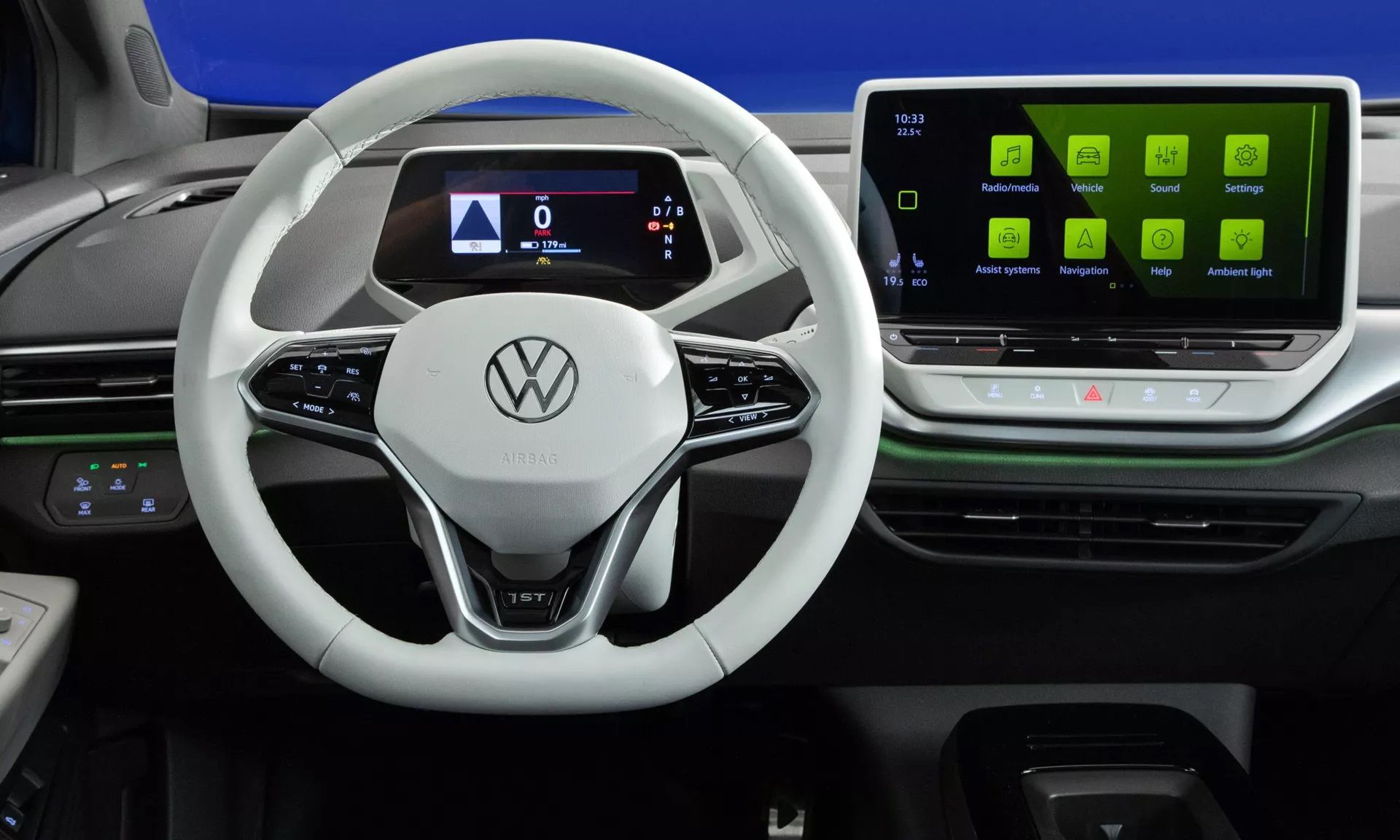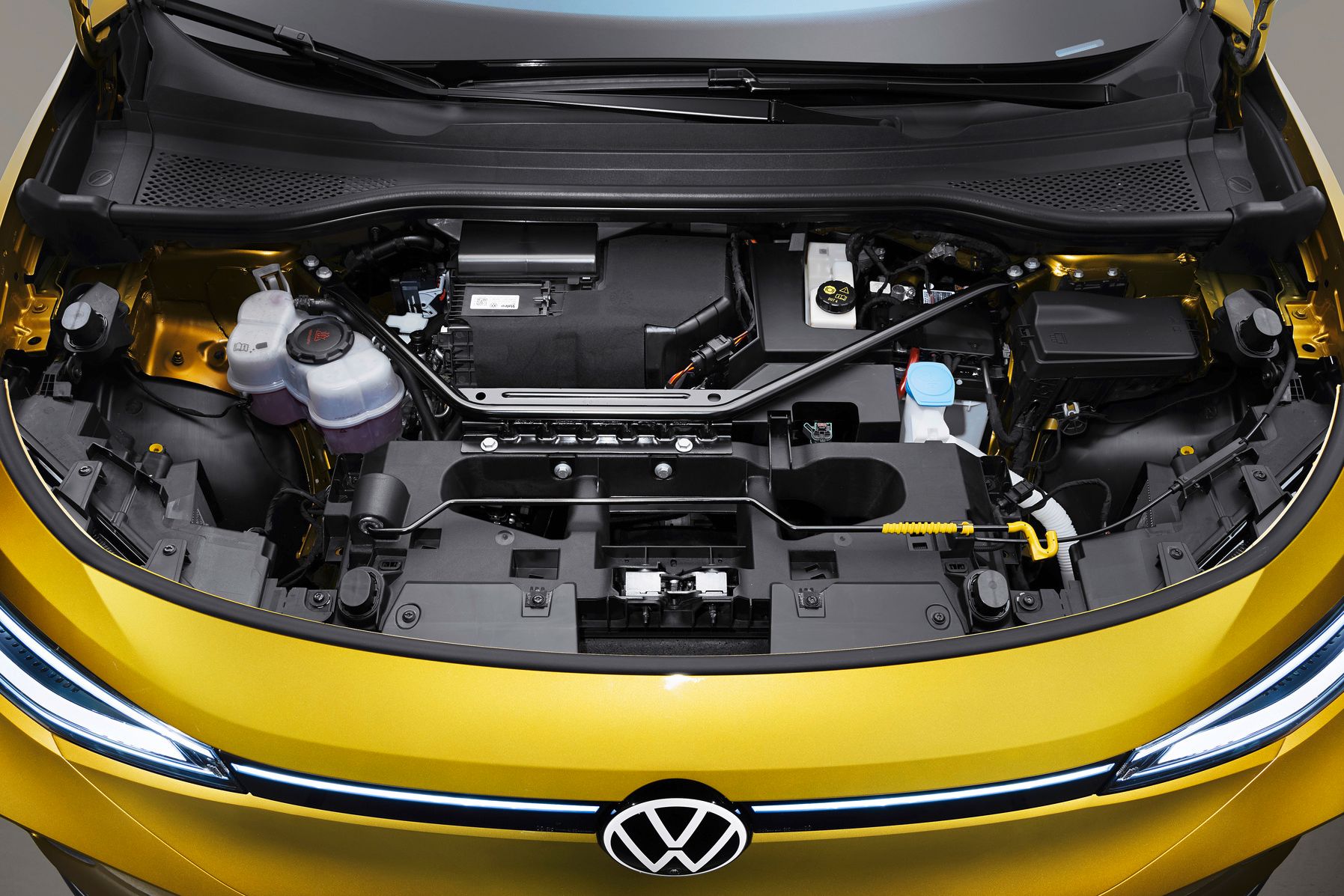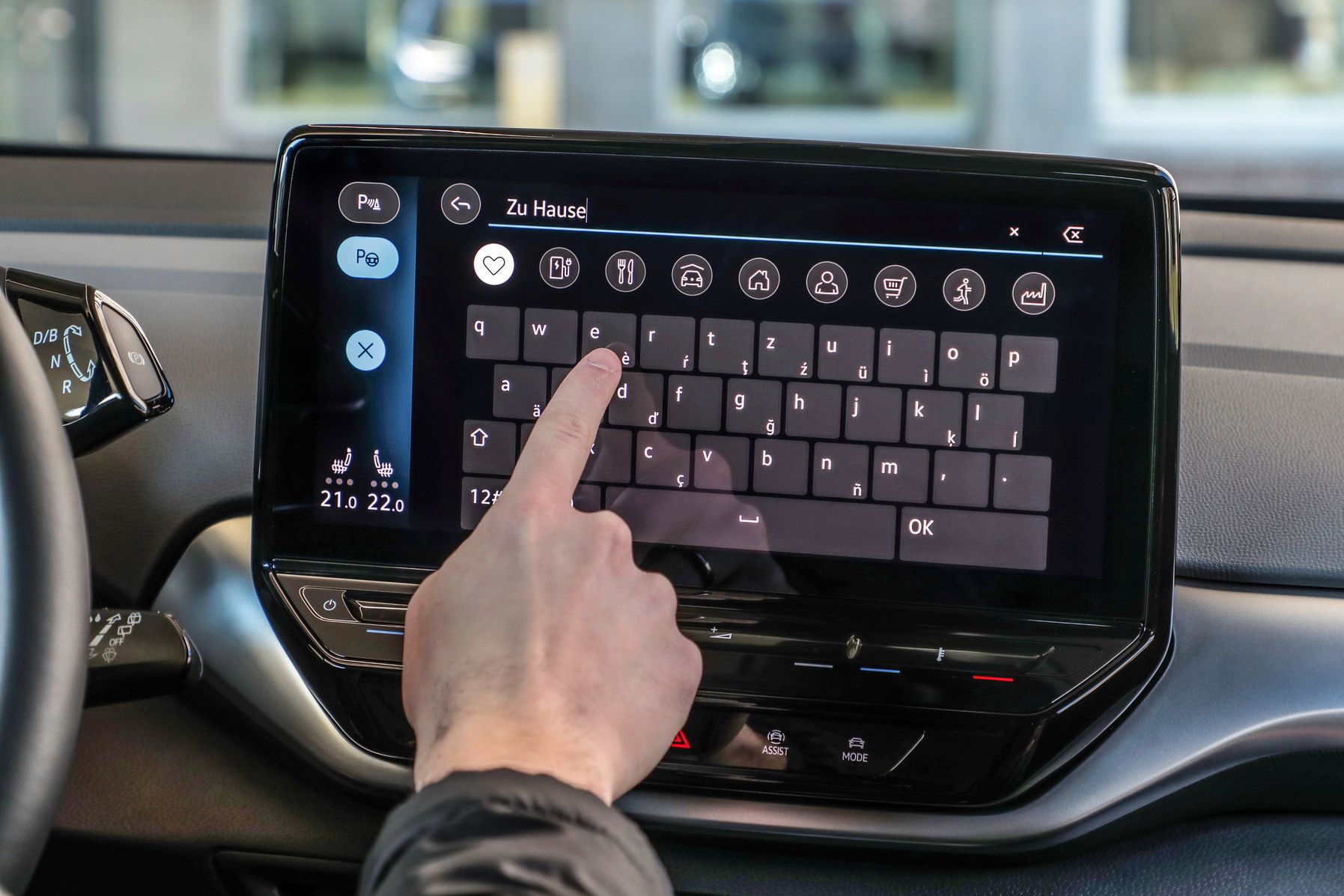Volkswagen is placing its electric family crossover future in the hands of the ID.4. The ID.4 is the first ever fully electric family vehicle that the automaker is going to sell globally. The automaker also hopes that it will attract internal combustion engine car customers who are looking for greener alternatives to fossil-fueled crossovers. It was important for Volkswagen that the ID.4 looked, felt, and more importantly, drove like a conventional medium-sized family SUV. The ID.4 follows the ID.3 in the VW electric lineup. It is based on the MEB platform, and it was officially unveiled to car buyers in September 2020. The follow-up to the ID.4 is the ID.5 and was debuted in 2021. The ID.4 bested the Toyota Yaris and the Honda-e to clinch the World Car Of The Year title in 2021, but it's not all rosy for the electric crossover. Here are the pros and cons of this compact electric SUV from the German automaker.
10 Pro: The Volkswagen ID.4 Is Priced Competitively
In the mid-size electric crossover segment, the VW ID.4 can be compared to the Tesla Model Y, the Kia Niro EV, Nissan Ariya, and the Ford Mustang Mach-E. Tesla recently increased the price for the Model Y and the base model now starts at $52,000 making it the most expensive mid-size SUV on this list. The Nissan Ariya starts at about $43,000 and additional options can push the price to the $50,000 range. The Mustang Mach-E starts at $47,000 before options, whereas the Kia Niro EV starts at $39,000. The Volkswagen ID.4 starts at $40,000, making it cheaper than other electric crossovers, except for the Niro EV. The price difference between the Niro EV and the ID.4 is insignificant considering that the VW ID.4 is leaps and bounds superior when it comes to the build quality.
9 Pro: The Volkswagen ID.4 Comes With A Roomy Interior
The interior of the ID.4 provides ample room for five occupants. Interior space is important to the practicality of a family vehicle. For SUVs, EV makers are producing vehicles with comparable or better interior space than their internal combustion engine counterparts so that they are desirable to modern car buyers. The feel and look of the interior also help in a smooth transition to an electric future for new electric vehicle buyers. The ID.4 can be compared to the Honda CR-V and the Toyota RAV4 when it comes to size and styling. It has a spacious interior with backseats that can accommodate three adults for long journeys. The head and knee room is decent with great thigh support. The vehicle is also fitted with double climate vents and charging ports at the back for convenience.
8 Pro: The Cargo Space Is Impressive
Volkswagen ditched the teardrop fastback shape that is on many electric crossovers in the market. The fastback roofline that dramatically slopes towards the rear usually improves aerodynamics, therefore, increasing battery efficiency and range. But, electric vehicle automakers usually apply this feature at the expense of compromising the cargo space of the vehicle. Volkswagen decided not to give the ID.4 a fastback roofline because they did not want to compromise on cargo space. Buyers of the new VW ID.4 can enjoy up to 30.3 cubic feet of cargo space according to the Volkswagen website. This is more than the cargo space found in the Ford Mustang Mach-E and the Nissan Ariya both having 30.2 and 22.8 cubic feet respectively.
7 Pro: Drives Like An ICE To Help New Owners Transition To EVs Easily
Volkswagen deliberately made the ID.4 to target car buyers who have been using internal combustion engine SUVs and are looking for comparable electric options. The ID.4 therefore needed to look more like a conventional crossover vehicle than an electric vehicle. More importantly, the ID4 needed to drive like a conventional gas vehicle to make prospective buyers have an easy time transitioning and adjusting to driving the vehicle. The ID.4 coasts along the road when you let off the acceleration pedal just like in a normal gas-powered vehicle and will gradually decelerate when the brakes are applied. This is unlike most electric vehicles that utilize one-pedal driving which helps in regenerative braking. One-pedal driving is a great feature and might be the future of electric vehicles, but the technology has not yet been fine-tuned in most cases the driving experience can sometimes feel unnatural and can be potentially dangerous to first-time electric car buyers.
6 Pro: The Base Model Has More Features Than The Tesla Model Y
The base model ID.4, which is where most new car buyers will begin their car ownership experience, is packed with many features that make it an ideal option over its rivals. As standard, the base model ID.4 gets wireless Apple Car Play and Android Auto, 19-inch wheels, heated seats and steering wheel, navigation, and wireless charging. Heated seats and steering wheels are an additional option in the KIA EV models as well as the Ford Mustang Mach-E. The heated steering wheel in the Tesla Model Y comes as an option. In general, Tesla Models do not support Android Auto. This might not be a significant issue in the US market. However, outside North America, where there are most Android users, not having Android Auto in a vehicle can prove to be a deal-breaker for car buyers.
5 Con: The ID.4's Infotainment System Is Unimpressive
Multiple reviews of the VW ID.4 suggest that the vehicle has a slow-responding infotainment screen. Swiping the LED screen to access functions is difficult, and sometimes the screen does not recognize swiping actions. Then there is the integration of functions that drivers use frequently, like climate control and heating and cooling of the seats. The ID.4 has integrated these functions on the screen in a layered multi-step process which is inconvenient and impractical when regularly driving an electric vehicle. The touch-sensitive buttons below the LED screen operate by sliding your fingers along them and the driver (or front passenger) can accidentally touch them when operating the infotainment screen. The same case applies to the touch buttons on the steering wheel. An ID.4 driver can easily engage functions accidentally when their hands are on the steering wheel. Overall the infotainment system of the VW ID.4 cannot match that of the Tesla Model Y and or even that of new Toyota electric vehicles.
4 Con: It Doesn't Have A Frunk
In the spirit of making the ID.4 look and feel like a conventional fossil-fueled crossover, Volkswagen might have overplayed its hand when it came to the front compartment. Electric car buyers have now been conditioned to expect mid to large-sized vehicles to have a front trunk. Front trunks are available in almost every electric vehicle today; from the Hummer EV to the Hyundai Ioniq 5 and this can also be used as a measure of practicality for the electric vehicle. The Volkswagen ID.4 unfortunately does not have a front trunk like the gas-powered crossovers that it’s trying to mimic. The ID.4 might have the best cargo space in the boot compared to its rivals, but the front trunk has become a standard for medium to large electric vehicles.
3 Con: It Isn't As Powerful As Most Of Its Rivals
The ID.4 produces less power than its competitors, the Tesla Model Y, Nissan Ariya, and Mustang Mach-E. The standard Model Y produces approximately 390 horsepower capable of taking the vehicle from a standstill to 60 miles per hour in 5.4 seconds. The Nissan Ariya has about 178 horsepower with a top speed of 99 mph and does 0 to 60 mph in 7.6 seconds. The rear-wheel drive Ford Mustang Mach-E produces 266 horsepower and can accelerate from zero to 60 miles per hour in 5.2 seconds, while achieving a top speed of 111 mph. The base model ID.4 can only manage a 0 to 60 mph time of about eight seconds and a top speed of 99 mph, all this courtesy of 201 horses.
2 Con: The ID.4 Isn't Practical For People With Limited Mobility
There are some features, or lack thereof, in the New ID.4 that make the electric vehicle less practical for persons with disabilities or limited mobility. First, the base model has a manual tailgate which is almost a sin for crossovers. Some people may find it difficult to manually open and close the tailgate while carrying heavy cargo into or from the trunk. An automatic tailgate is available in the mid-range and the top-spec versions of the ID.4, but you have to pay $1,500 and $4,500 more respectively. The base model ID.4 has a manual driver seat height adjustment and this can make it uncomfortable for elderly people to gain a convenient driving position. People with limited arm movement can also be negatively affected by this feature. There is a huge ridge in the cargo area after folding the rear seats which would make even the able-bodied ID.4 owners have a difficult time sliding cargo forward.
1 Con: Software Issues Are A Growing Concern
There has been a growing concern over software glitches in the ID.4 since its debut. This concern has slowly started to infiltrate car enthusiast communities and is turning away prospective car buyers from Volkswagen’s electric crossover. The automaker debuted the ID.4 with the First Edition model back in 2021. The problem with First Edition models is that most of them are usually prototypes and the customer feedback enables automakers to tweak any glitches or malfunctions before the other models are brought to market. The VW ID.4 debuted with several software issues including a long loading time for the infotainment screen, reverse camera malfunctions and problems with Android Auto connectivity. According to E for Electric, it also seems that VW was still working on the ID.4's mobile application after the First Edition was already on the market. The app is difficult to use and still has problems connecting to the vehicle’s infotainment system. On the largest Volkswagen ID.4 online community, 40-percent of ID.4 owners complained of software glitches in their vehicles. Volkswagen has yet to give an official statement concerning the ID.4’s software problems.

